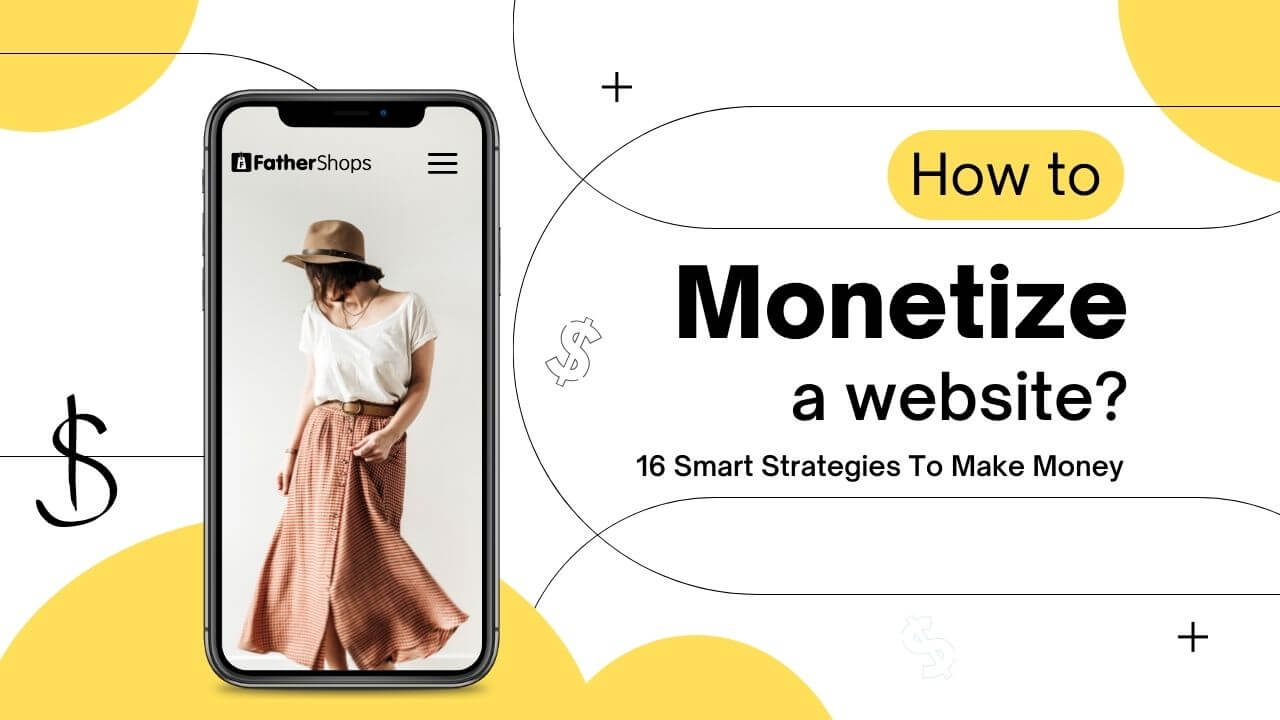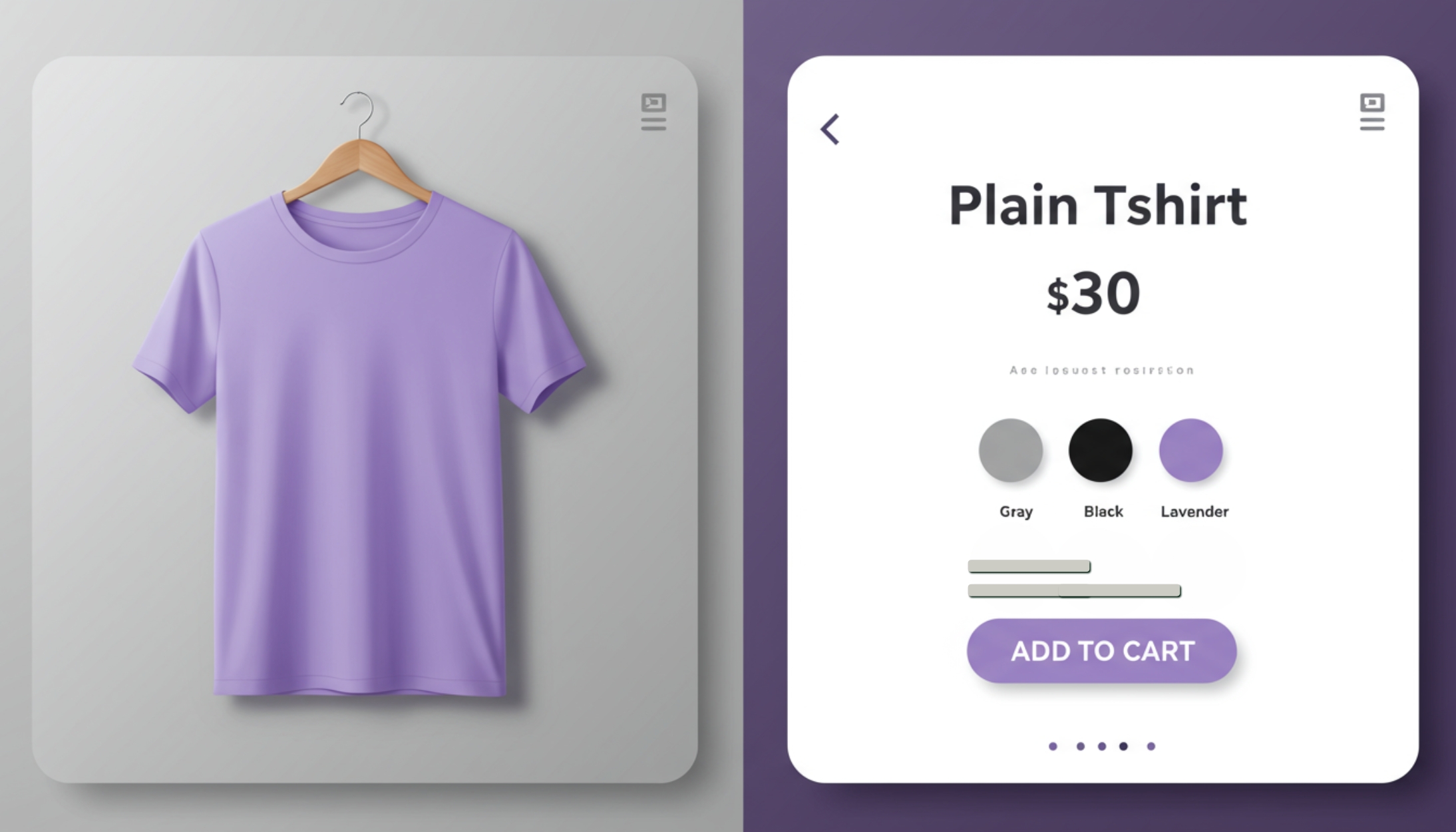Table Of Content
- Introduction
- Advertising
- Affiliate Marketing (How to Monetize a Website?)
- Sponsored Content
- Membership Models
- Subscription Services
- E-commerce Integration
- Donations or Crowdfunding
- Email Marketing
- Sponsored Reviews or Endorsements
- Licensing or Syndication
- Events or Workshops
- Consulting or Coaching Services
- Sponsored Links or Directory Listings
- Set up a dropshipping store
- FAQ
- Conclusion
Discover how to monetize a website using various strategies, from e-commerce and dropshipping to events. Transform your popular site into a revenue-generating platform with just a few techniques.
Introduction
- Definition of website monetization: This section introduces the concept of website monetization, which involves earning revenue from a website’s traffic, content, or services.
- Importance of diversifying revenue streams: It emphasizes the significance of having multiple sources of income from a website to reduce dependency on a single method and increase overall revenue potential.
Advertising
- Display ads: This point discusses placing visual advertisements on a website’s pages, typically through ad networks like Google AdSense, to generate revenue based on clicks or impressions.
- Native advertising: It covers the integration of sponsored content seamlessly within the website’s design and context, providing a more natural advertising experience for users.
- Video ads: This involves embedding video advertisements within the website’s content or utilizing pre- or mid-roll ads in video content to monetize user engagement.
- Pop-up or interstitial ads: It discusses using intrusive ad formats that appear in front of or on top of website content, often generating revenue at the expense of user experience.
Affiliate Marketing (How to Monetize a Website?)
- Selecting relevant affiliate marketing programs: This focuses on choosing affiliate programs that align with the website’s niche or audience to maximize earning potential.
- Integrating affiliate links organically: It emphasizes the importance of seamlessly incorporating affiliate links into the website’s content or recommendations to increase click-through rates.
- Optimizing affiliate content for conversions involves refining content strategies to effectively promote affiliate products or services and drive conversions for higher affiliate commissions.
Sponsored Content
- Collaborating with brands for sponsored posts/articles: It involves partnering with brands to create content that promotes their products or services in exchange for payment.
- Creating engaging sponsored content that aligns with your audience: This point stresses the need to produce sponsored content that resonates with the website’s audience to maintain authenticity and trust.
- Ensuring transparency and authenticity in sponsored content: It emphasizes disclosing sponsored content to users and maintaining transparency about any financial brand relationships.
Membership Models
- Offering premium memberships with exclusive content or features: This point discusses creating membership tiers that provide access to premium content, features, or community perks in exchange for a subscription fee.
- Implementing tiered membership levels with varying benefits involves structuring membership plans with different benefits or privileges to cater to diverse user preferences and budgets.
- Providing member-only discounts or perks: This emphasizes offering exclusive discounts, bonuses, or special offers to incentivize users to subscribe and remain loyal members.
Subscription Services
- Creating subscription-based services or products: This point involves developing subscription-based offerings, such as access to digital content libraries, software tools, or ongoing services, Fathershops Premium Apps, Fathershops Themes, for a recurring fee.
- Offering recurring memberships for ongoing access to content or services: It discusses providing subscribers with continuous access to premium content or services in exchange for regular subscription payments.
- Providing value-added features or bonuses for subscribers: This emphasizes enhancing the subscription experience by offering additional benefits, such as exclusive content updates, early access, or personalized support.
E-commerce Integration
- Selling physical or digital products directly on your website involves setting up an online store on the website to sell merchandise, digital downloads, or other products to visitors.
- Integrating with e-commerce platforms for seamless transactions: It discusses integrating third-party e-commerce platforms or payment gateways to streamline purchasing and ensure secure transactions.
- Offering special promotions or discounts to drive sales: This uses promotional strategies like discounts, coupons, or limited-time offers to encourage visitors to make purchases and boost e-commerce revenue or monetize a website to earn a passive income.
Donations or Crowdfunding
- Adding donation buttons or links for voluntary contributions: This involves soliciting voluntary donations from website visitors by providing options for one-time or recurring contributions.
- Launching crowdfunding campaigns for specific projects or goals: It discusses initiating crowdfunding campaigns to raise funds for particular projects, products, or initiatives through platforms like Kickstarter or Patreon.
- Offering rewards or incentives for donations: This emphasizes giving donors rewards, perks, or exclusive access to content as a token of appreciation for their contributions.
Email Marketing
- Building and nurturing an email list of subscribers involves capturing visitor emails through opt-in forms and building relationships with subscribers through regular email communications.
- Sending targeted promotional emails to drive sales or conversions: It discusses leveraging email marketing campaigns to promote products, services, or special offers to subscribers and encourage purchases or conversions.
- Monetizing email newsletters through sponsorships or affiliate offers: This emphasizes generating revenue from email newsletters by including sponsored content or affiliate promotions that resonate with subscribers’ interests.
Sponsored Reviews or Endorsements
- Partnering with brands for sponsored product reviews or endorsements involves collaborating with brands to review or endorse their products or services in exchange for compensation.
- Providing honest and unbiased reviews while disclosing sponsorships: It stresses the importance of maintaining transparency and integrity by delivering genuine reviews and disclosing any financial relationships with sponsoring brands.
- Negotiating compensation terms and maintaining editorial integrity: This emphasizes negotiating fair compensation terms with sponsoring brands while ensuring editorial independence and integrity in review content.
Licensing or Syndication
- Licensing content to other websites, publishers, or platforms: This involves licensing original content, such as articles, images, or videos, to other websites, publishers, or platforms for a fee.
- Syndicating content to reach broader audiences or generate additional revenue: It discusses distributing content to syndication networks, media outlets, or aggregators to expand reach and earn revenue through licensing agreements or syndication partnerships.
- Establishing licensing agreements and usage guidelines: This emphasizes the importance of establishing clear licensing agreements and usage guidelines to protect intellectual property rights and ensure proper attribution and compensation for syndicated content.
Events or Workshops
- Hosting paid events, webinars, or workshops: This involves organizing and hosting live or virtual events, webinars, or workshops on topics of interest to the website’s audience and charging admission fees or registration fees for attendance.
- Charging admission fees for access to exclusive events or content: It discusses offering premium or VIP access to exclusive events, content, or experiences for a fee to incentivize attendance and generate revenue.
- Offering value-packed educational experiences for attendees emphasizes providing valuable, informative, and engaging content or experiences during events or workshops to ensure attendees’ satisfaction and encourage participation in future offerings.
Consulting or Coaching Services
- Offering one-on-one consulting or coaching sessions: This point involves providing personalized consulting or coaching services to individuals or businesses seeking expert advice or guidance in specific areas.
- Packaging expertise into premium service offerings: It discusses bundling consulting or coaching services into comprehensive packages with defined deliverables, timelines, and pricing structures to appeal to clients.
- Providing personalized guidance and support for clients: This emphasizes delivering customized solutions, recommendations, and support to clients to help them achieve their goals and maximize the value of consulting or coaching services.
Sponsored Links or Directory Listings
- Charging fees for sponsored links or directory listings on your website: This involves offering businesses or organizations the opportunity to promote their websites, products, or services through sponsored links or directory listings on your website for a fee.
- Offering exposure to businesses or organizations in relevant niches: It discusses providing targeted exposure to businesses or organizations in specific industries or niches that align with your website’s audience and content.
- Ensuring that sponsored links are relevant and add value to your audience: This emphasizes maintaining the quality and relevance of sponsored links or directory listings to enhance user experience and credibility while generating revenue.
Set up a dropshipping store
Setting up a dropshipping store involves creating an online retail business where you sell products to customers without holding any inventory yourself and monetize your website. Here’s how it works:
- Choose a Niche: Select a specific market or niche for your dropshipping store. This could be anything from fashion accessories to pet supplies.
- Find Suppliers: Research and identify suppliers or wholesalers who offer dropshipping services for the products you want to sell. You’ll need to establish partnerships with reliable suppliers who can fulfill orders on your behalf.
- Set Up an Online Store: Create an e-commerce website or use a platform like Fathershops to set up your dropshipping store. Customize your store with branding, product listings, and payment options.
- Import Products: Import product listings from your chosen suppliers to your online store. Ensure product descriptions, images, and prices are accurate and appealing to potential customers.
- Drive Traffic: Implement marketing strategies to drive traffic to your dropshipping store. This can include search engine optimization (SEO), social media marketing, content marketing, and paid advertising.
- Receive Orders: When a customer places an order on your website, it’s automatically forwarded to your supplier for fulfillment. The supplier then ships the product directly to the customer, bypassing your need to handle inventory or shipping logistics.
- Manage Customer Service: Provide excellent customer service by promptly addressing inquiries, handling returns or exchanges, and ensuring a smooth shopping experience for your customers.
- Analyze and Optimize: Continuously monitor your dropshipping store’s performance, including sales metrics, customer feedback, and website analytics. Use this data to identify areas for improvement and optimize your store for better results.
FAQ
How long does it take to start making money from a website?
The time it takes to start earning money from a website can vary depending on the topic you cover, how good your content is, how much you promote it, and the methods you use to make money. Generally, seeing a steady income stream can take a few months to a year or even longer.
What does it mean to monetize a website? or how to monetize a website?
Monetizing a website means finding ways to make money from it. This could involve showing ads, paying for subscriptions, selling products, or accepting donations. For example, you can sign up with Google AdSense to display ads on your site and get paid when people click on them.
How many visitors do you need to start making money from your website?
You need no magic number of visitors to start making money from your website. It depends on factors like how you’re making money, how engaged your audience is, and what kind of content you have. Generally, the more visitors you have, the more potential you have to make money, but it’s not the only factor.
How can you get more people to visit your website?
To increase traffic to your website, you can create high-quality content that people want to read, make sure your content is optimized so search engines can find it, share your website on social media, and use advertising to reach new audiences.
Conclusion:
In conclusion, monetizing a website requires strategic planning and implementation of various tactics to generate income effectively. By leveraging the 16 smart strategies outlined in this guide, you can optimize your website’s revenue potential and turn it into a profitable online venture. Whether through advertising, affiliate marketing, e-commerce, or other innovative methods, there are ample opportunities How to monetize a website and create a sustainable income stream. Stay focused, adapt to changes in the digital landscape, and continually refine your approach to maximize success in monetizing your website.





